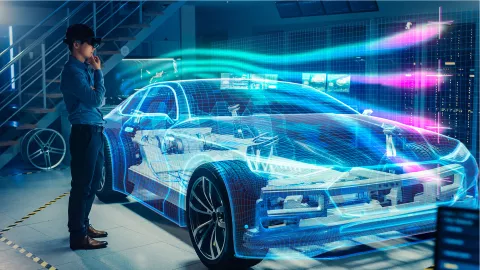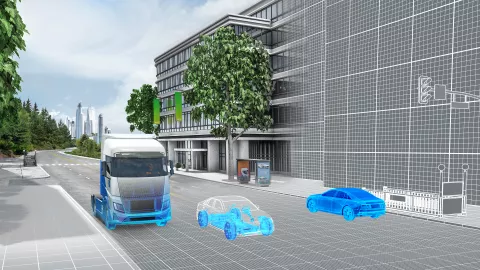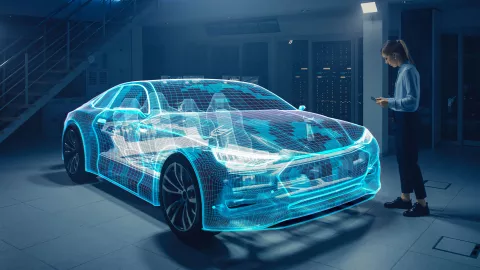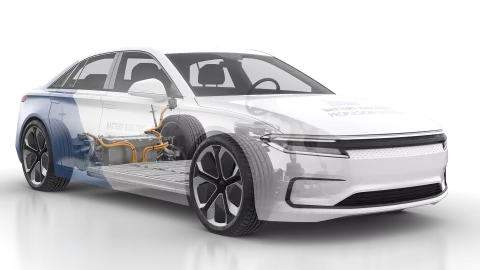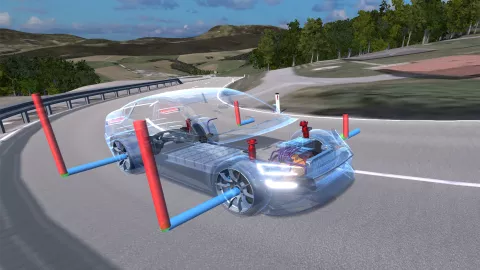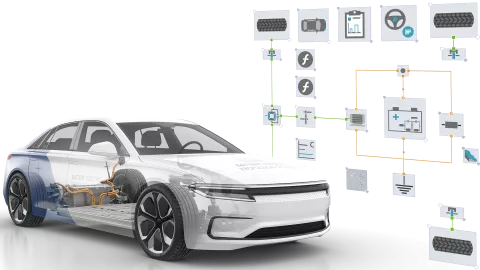Vehicle attributes include driving and steering behavior, acceleration times, but also air conditioning and range. The latter is particularly crucial for the acceptance of e-mobility.
The range is influenced by a wide variety of factors. In addition to the size of the battery, the efficient use of energy, one's own driving behavior, etc., aerodynamic drag also has a significant influence.
Through recuperation, braking energy can be converted back into electrical energy. If the drag coefficient (cw value) is now reduced by 10%, this can lead to an increase in range of up to 8%.
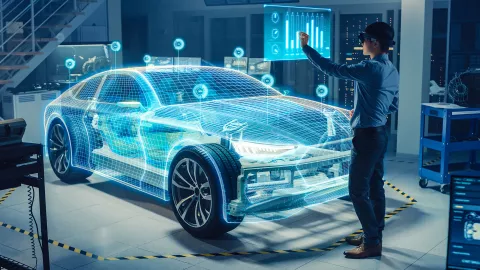
Large battery packs are installed in battery electric vehicles. The weight and its distribution influence the driving and steering behavior.
The various climatic influences must be taken into account when tuning the cabin air conditioning. The challenge here is that passenger comfort and the energy required for it are offset by the loss of range.
Virtual Twins enable you to capture all these interrelationships and analyze them together. As a virtual image of individual components and systems or even entire vehicles and with the inclusion of their environment, they are an efficient tool for driving development forward.
